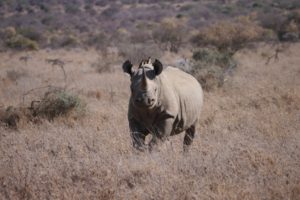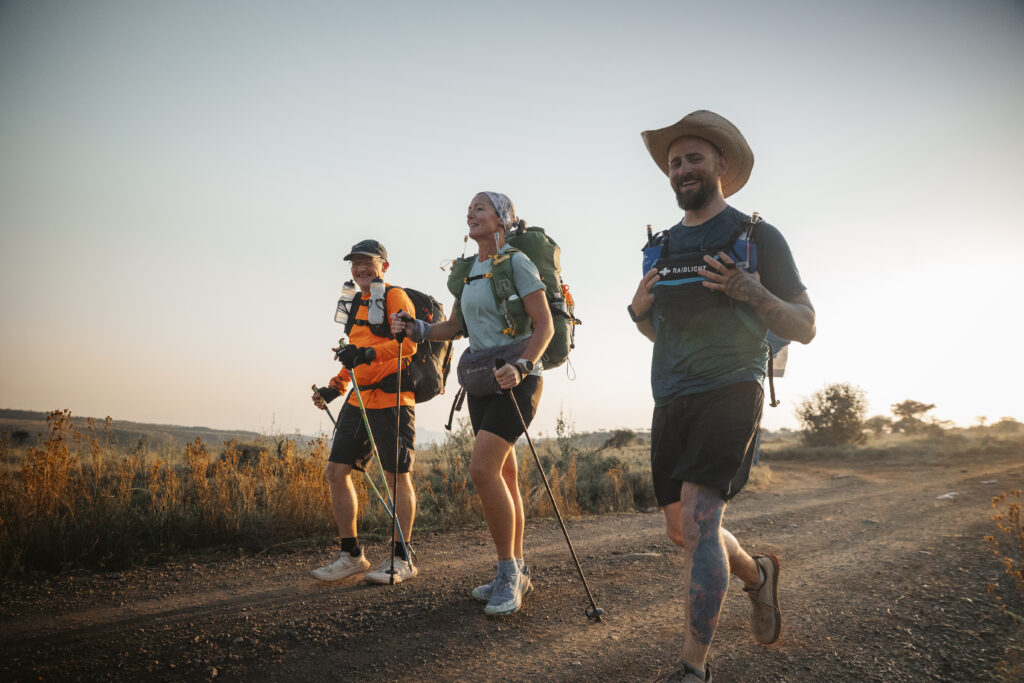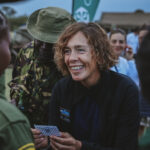The 2025 ForRangers Ultra Race Diary, by Eleanor Glynne-Jones, Michael Hearn Intern 2024–25, and Raj Pandya, Community Fundraising Manager.
In September, 80 participants took on an incredible challenge – 230km of running across Kenya’s breathtaking wilderness – driven by a shared goal to make a real difference to rhino conservation. By raising vital funds, these amazing runners are helping provide equipment and supporting the welfare of the brave rangers who risk everything to protect endangered wildlife, including the iconic rhinos of East Africa.
In the shadow of Mount Kenya, on a sunny September morning, 80 extraordinary runners set off on a 230 km journey. Over the next five days, they traversed multiple conservancies teeming with East Africa’s iconic wildlife, running not just for the challenge, but in support of the rangers who protect these landscapes.
Joining them every step of the way were Eleanor and Raj from the Save the Rhino team, offering encouragement, sharing inspiring stories, and helping to keep spirits high as the runners crossed rugged terrain from lush grasslands to dense forests.
Discover more about their unforgettable trip below.
My first trip to Kenya and the ForRangers Ultra 2025 – Eleanor Glynne-Jones, Michael Hearn Intern 24-25
During my week at the ForRangers Ultra, I saw some incredible sights. From seeing rhinos for the first time (from a helicopter!), to beautiful sunrises and sunsets stretching across incredible landscapes. However, the part of the Ultra that had the most lasting impact on me, and many others, was the physical and emotional resilience of the runners, and the amazing bonds formed through this experience.
Not only were the runners taking on 230km through difficult terrains and at high altitude and temperatures, but they also had to carry all their kit for the week, including bedding, food, emergency equipment, and the rest!
Despite facing these extreme challenges, the runners remained in high spirits and supported each other every step of the way, showing incredible mental resilience. With temperatures plummeting overnight, and participants having to camp, sleep-filled nights were few and far between, but still the runners faced every day head–on with optimism and excitement, keeping the team morale high.
There was always an atmosphere of determination and excitement, however, taking on an ultra can also be a really emotional experience. Everyone participating has their why; from a passion for supporting rangers and wildlife, to dealing with grief, overcoming the limits of a past health struggle, or pushing through personal mental battles. This meant that bonds formed really quickly between the runners, as they leaned on each other for support and shared their personal stories and battles. Runners who joined the race alone ended up with companions to tackle each tough route with, forming unique bonds and lifelong memories.
Participants continuously showed gratitude towards the rangers, the medical staff, and everyone working at the ultra, creating an amazing sense of community throughout the five days. The Save the Rhino team at the event ensured the runners knew the incredible impact they would have on the lives of rangers throughout Africa.
Back at the Ultra for 2025 – Raj Pandya, Community Fundraising Manager
Life has a way of reminding us of what truly matters, revealing the meaning behind struggle, perseverance and pressure. For me, the ForRangers Ultra was one of those moments. Watching ultra-endurance athletes and wildlife rangers come together, I was struck by what it means to act for something bigger than yourself.
For five days, runners from around the world ran alongside, spoke with and were protected by wildlife rangers from the Laikipia region of Kenya, the very people the ForRangers initiative supports.
Together, the runners raised more than £125,000 for rangers across Kenya!.
This year, we worked to create more meaningful interactions between the rangers and runners. Each runner received a Save the Rhino wristband with one instruction: pass it on to a ranger during the 230 km course. By the end of the Ultra, hardly any runners still had their band. Instead, they appeared on the wrists of rangers, small symbols of interactions shared along the route.
We also drew on Save the Rhino’s work with primary schools in the UK. Letters written by young students were shared with runners to hand to the rangers they met; heartfelt messages of thanks and admiration from children thousands of miles away who understand the value of protecting wildlife. Watching the rangers read those letters was more emotional for me than I expected.
The connection to the cause among this year’s ForRangers Ultra participants was extraordinary. I saw it in every interaction, every smile exchanged, and every fundraising milestone reached. Thanks to their efforts, vital funds are now in place to provide medical care, life insurance and specialist training for rangers, strengthening the support systems they rely on every day.
It isn’t often that you’re able to see first-hand the fruits of one’s fundraising labours. Through the ForRangers Ultra, we’re able to connect runners with the Rangers and show them exactly why each individual footstep and fundraising ask are so important.
By supporting the ForRangers Ultra, you’re standing with the rangers who risk their lives every day to protect Africa’s most endangered wildlife. The funds raised directly provide these rangers with the resources, training, and tools they need to stop poaching and defend species teetering on the edge of extinction. Every step the runners take is a step toward securing a safer, more sustainable future for our planet’s most vulnerable animals.
By supporting the ForRangers Ultra, participants stand with the rangers who risk their lives daily to protect Africa’s most endangered wildlife. The funds raised directly equip these rangers with the resources, training, and tools they need to prevent poaching and safeguard species. Every step taken by the runners helps pave the way toward a safer, more sustainable future for some of the planet’s most vulnerable animals.













